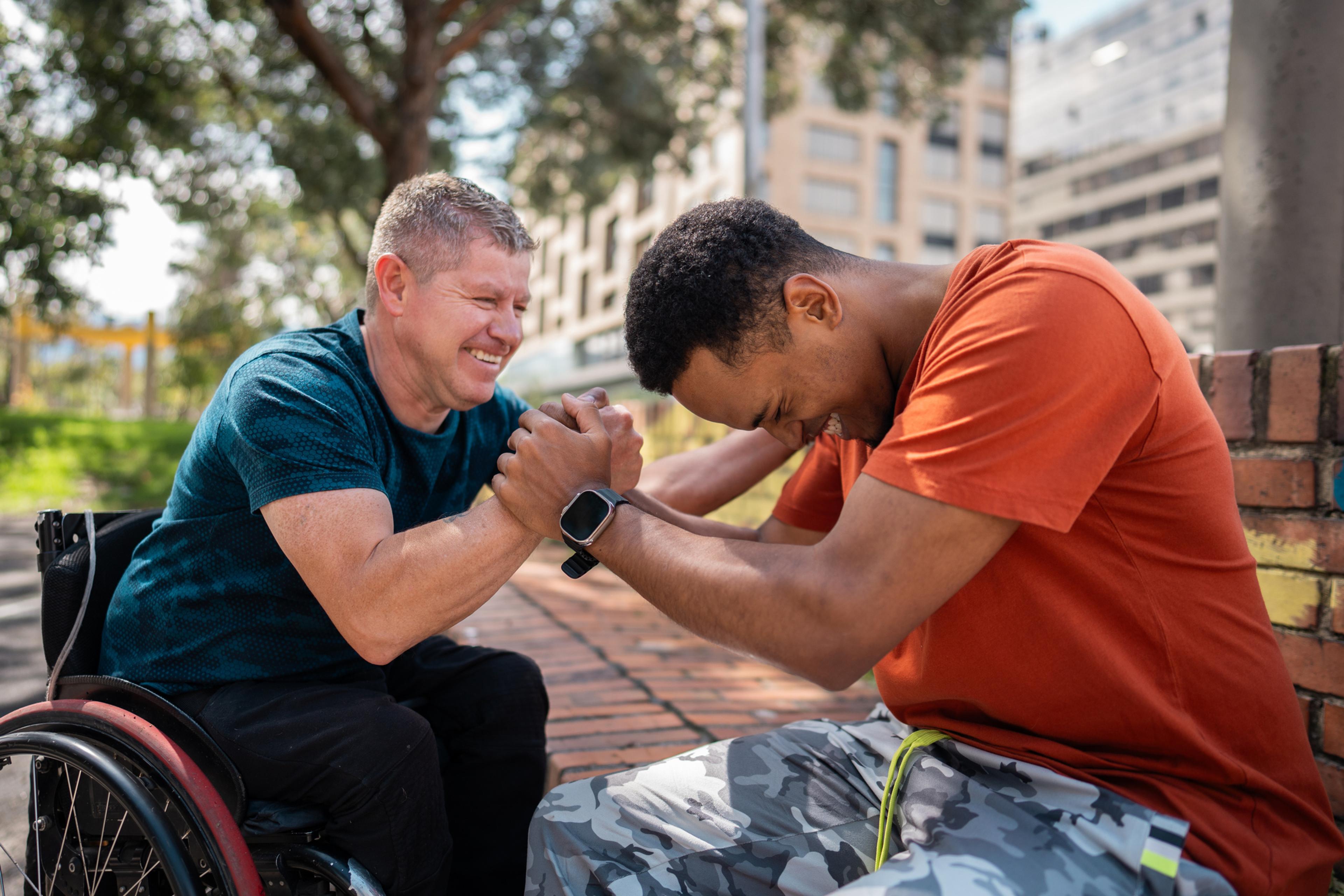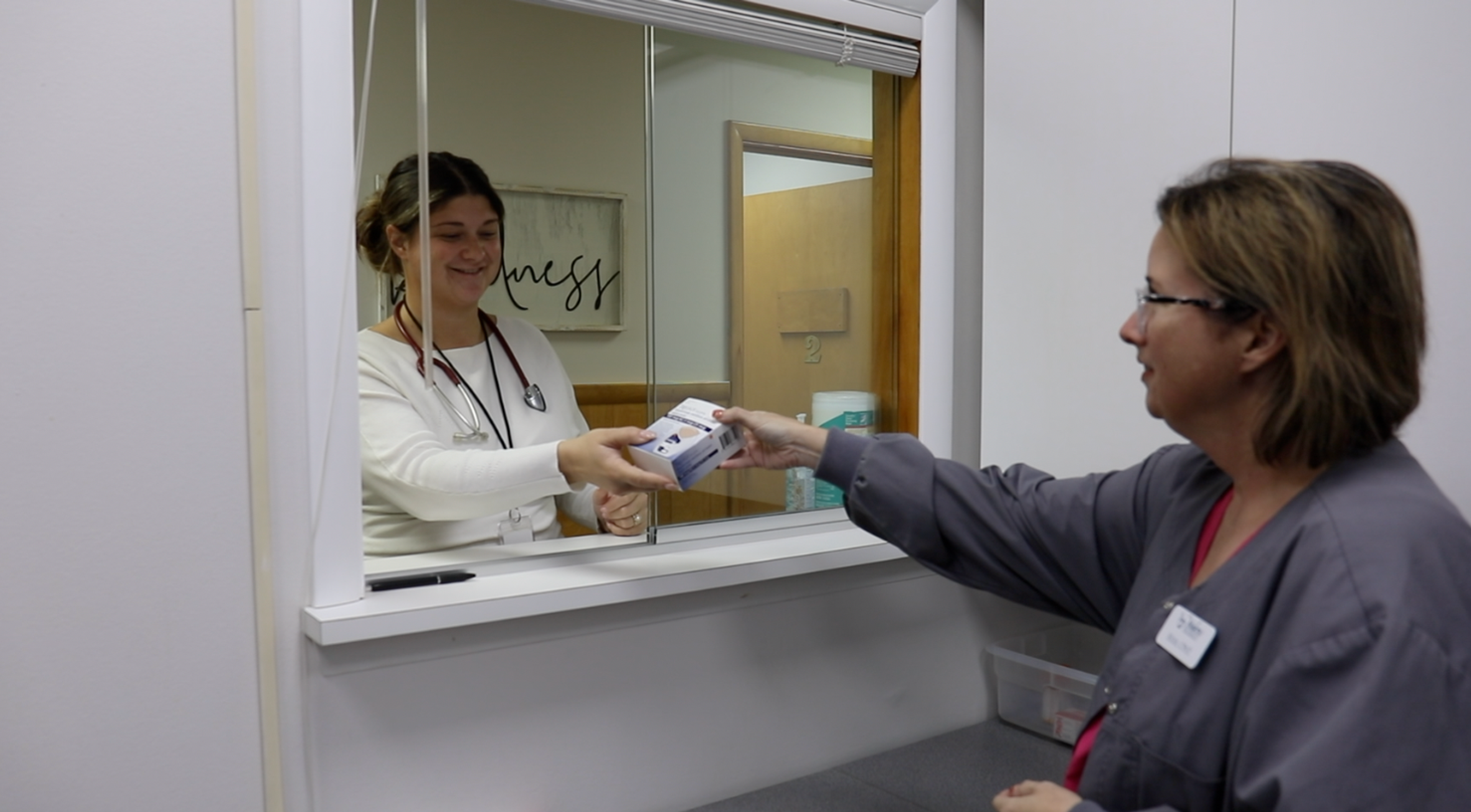What is Disability Pride Month?
Jake Newby
| 3 min read

Key Takeaways
- Disability Pride Month is celebrated every July to acknowledge and embrace the contributions of and achievements of people with disabilities.
- The observance commemorates the passage of the Americans with Disabilities Act, which enacted significant protections against discrimination in many areas of life for the disabled community.
- The five bands included in the Disability Pride Month flag each have a meaning behind them, as does the charcoal gray background.
More than one in four adults in the United States (28.7%) have some type of disability – whether seen or unseen – according to the Centers for Disease Control and Prevention (CDC). Millions of adults have learning, developmental or intellectual disabilities, as well as mental or chronic illnesses.
Disability Pride Month is celebrated every July to acknowledge and embrace the contributions of and achievements of people with disabilities. It’s also a time to encourage everyone to reject discrimination and shame and to overcome internalized ableism.
Since the initial celebration of Disability Pride Month in 2015, cities across the U.S. have celebrated the observance with parades and other festivities.
The importance of the Americans with Disabilities Act
Disability Pride Month also serves to commemorate the passage of the Americans with Disabilities Act (ADA) in 1990. The ADA enacted significant protections against discrimination in many areas of life for the disabled community. The law “guarantees that people with disabilities have the same opportunities as everyone else.” This applies to everyday activities such as:
- Accessing public facilities
- Shopping
- Telecommunication
- Transportation
Perhaps the ADA’s greatest impact has been in the workforce. It provides equal opportunities in employment and makes it unlawful to discriminate in employment against a qualified individual with a disability, according to the U.S. Equal Employment Opportunity Commission, which states that job discrimination against people with disabilities is illegal if practiced by:
- Employment agencies
- Labor-management committees and labor organizations
- Private employers
- State and local governments
Though there are still barriers to break and stigma to shatter, the ADA has helped shift how people perceive disability and has fostered greater awareness about the importance of inclusion.
What does the Disability Pride Month flag represent?
The Disability Pride Month flag was designed in 2019 by writer Ann Magill, a woman with cerebral palsy. The design was tweaked multiple times between then and 2021. Here is the meaning behind the current iteration of the flag:
- The charcoal gray background represents the mourning the loss of disabled people who have died due to ableism, violence and negligence, as well as to protect against the mistreatment of the disabled community.
- The diagonal band represents disabled people’s need to cut through the barriers that separate them from society, as well as the darkness of ableism.
- The green band represents those with sensory disabilities.
- The blue band represents those with emotional and psychiatric disabilities, including anxiety, depression and mental illness.
- The white band represents those with unseen and undiagnosed disabilities.
- The gold band represents those who are neurodivergent.
- The red band represents those with physical disabilities.
Ways to celebrate and acknowledge Disability Pride Month
Members of the disabled community can let their voices be heard and celebrate the observance by sharing their story – both in person with family and friends and on social media platforms using the hashtags #DisabilityPride and #DisabilityPrideMonth.
Allies can celebrate by advocating for the disabled community and educating themselves, both throughout the month of July and year-round.
Learning to use the appropriate language is part of that education. We should use terms like “disability/disabled” and “person with a disability/disabled person” instead of ableist terms like “handicap/handicapped” and “special needs.” We should say a person “has a disability” or “is disabled” instead of saying they “suffer from” or are a “victim of” disability.
Individuals can also look for ways to get involved in their community. In Michigan, “Breaking Barriers 2025” is on July 29 in Lansing. The all-day event includes a gathering to bring attention to issues that impact people with disabilities, the exploration of this year’s Breaking Barriers Art Exhibit and a sensory-friendly evening at Jackson Field before, during and after a Lansing Lugnuts Minor League Baseball game. Learn more about the events here.
Read on:
Photo credit: Getty Images





